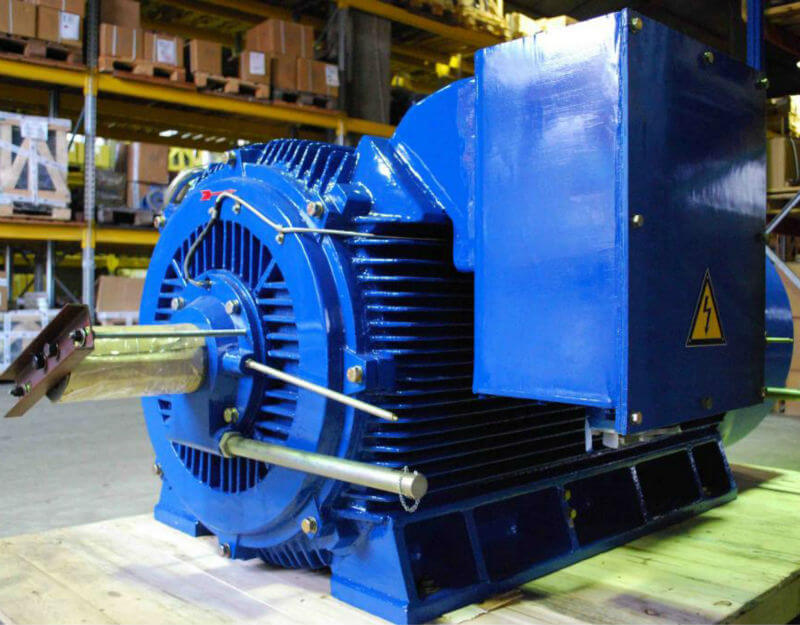
Electric motors are critical to today’s industrial processes. In recent years, they have used as much as 68% of electricity in all of U.S. manufacturing, providing for essential industrial processes including pumps, fans, refrigeration, compressors, and facility HVAC systems, among others. Operations leaders at manufacturing, energy, mining, and waste management companies rely on electric motors every day for mission-critical aspects of their businesses.
Even so, electric motors are often allowed to run with minimal or ill-suited maintenance until a catastrophic failure occurs, relying on backup motors as a default instead. A 2012 study of 4,797 industrial electric motors found that 90% of failures occurred in 54% of facilities in the study, where “maintenance was also found to have a significant impact.” As we will demonstrate, predictive maintenance through smart sensors and analytics can help these organizations get back on track.
Routine Maintenance Schedules Often Fall Short
Even businesses that consistently apply maintenance practices often follow rigid manufacturers’ schedules, which become less relevant as motors age by failing to account for their actual maintenance needs. This has real consequences for operational efficiencies and business results, as well as worker safety.
Each electric motor acts differently depending on its environment, how it’s being used, its workload, the power quality, and the status of the transmission between the load and the electric motor. In other words, each active unit becomes completely different from other active units of the same model over time, despite their identical origins
Applying Modern Sensors to Motors in Any Environment
Fortunately, low-cost sensors, high-speed computing, and modern analytics have paved the road for condition-based maintenance (CBM) systems. These analytics systems provide predictive maintenance solutions that prevent electric motor failures in ways manufacturer-provided maintenance schedules cannot.
Sensors can be simple, even while providing for powerful and comprehensive analytics. The latest sensor technologies do not require special installation on motors themselves. Instead, they can be applied to the power lines that feed the motors. This ensures even hard-to-reach motors in mining and energy industries can benefit from sensors.
Once connected, service providers can implement real-time monitoring of motor conditions — including temperature, vibrations, and infrared readings. Those providers can simulate conditions that correspond to the real conditions of the motor and make schedules that correspond to each motor’s unique needs.
How CBM Works
Condition-based maintenance uses machine learning mechanisms to build digital twin models — digital replicas of real motors that change with those motors over time, thanks to a constant feed of real-time data. At GRT, our analysts apply powerful analytics to these digital twins to predict many of the failures that might happen with our clients’ motors. We can also define what kind of failure may happen with the motor and with the transmission of power between the electric motor and the load.
GRT can therefore make accurate maintenance schedules and even predict an asset’s ability or an overall system’s ability to perform without failure. We can provide customers with automated alarms and pinpoint their possible reasons for approaching failures, allowing industrial leaders to take preventative measures, such as:
- minimizing costly breakdowns
- saving operational costs of downtime.
- preventing unnecessary stoppage of core processes
- ensuring the personal safety of workers
The Value of Collecting Electric Motor Data
Naturally, creating a real-time, comprehensive view of your electric motors has long-term business benefits. You gain greater operational reliability and reduced risk to end production, among others. Simplified interfaces provided by GRT or integrations with your existing enterprise software mean you enjoy streamlined visualization of maintenance processes, no matter your level of digital sophistication.
In the future, you may also monetize data from your predictive maintenance efforts. Specifically, you may sell performance and maintenance data to the manufacturers that provide their electric motors. In turn, those companies can optimize their products to reduce future failures themselves.
Get Your Electric Motor Maintenance on a Predictive Track
As an industry operations leader, you have two options. You can wait until your asset is broken, lose operational abilities, and spend lots of money on repairs, or you can contract GRT and begin monitoring your assets, visualizing the real status of your asset, and extending its life with proper maintenance. Contact us directly to discover how easy it is to get the greatest possible value out of your electric motors.



